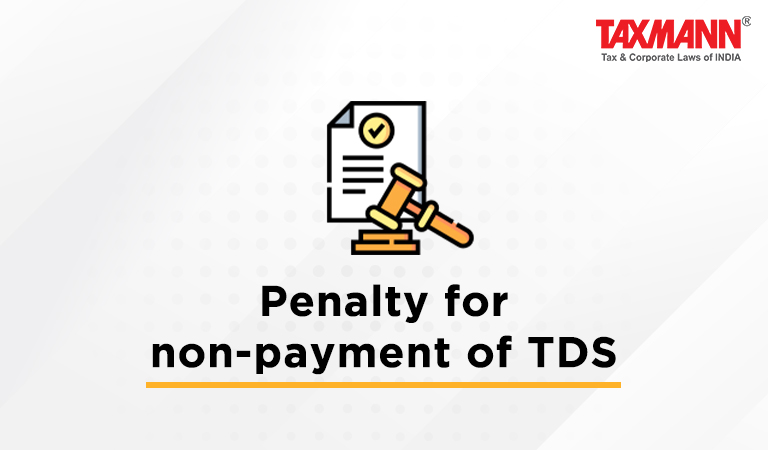Penalty for non-payment of TDS
- News|Blog|Income Tax|
- 2 Min Read
- By Taxmann
- |
- Last Updated on 24 February, 2022
Case Details: Deccan Charters (P.) Ltd. v DCIT - [2022] 135 taxmann.com 128 (Bangalore - Trib.)
Judiciary and Counsel Details
-
- N.V. Vasudevan, Vice President and Chandra Poojari, Accountant Member
- Suresh Muthukrishnan, CA for the Appellant.
- Priyadarshi Mishra, Addl. CIT (DR) for the Respondent.
Facts of the Case
The assessee was engaged in the business of chartered flying of small aircraft. It had not remitted the amount collected by TDS to the government during the relevant assessment year. The Assessing Officer (AO) passed an order under section 201 treating the assessee as an assessee-in-default. Further, the assessee did not file any appeal against the order under section 201 and remitted tax deducted at the source along with interest.
Later, the AO initiated a penalty proceeding under section 221. Assessee responded that it was facing severe financial hardship, and the same constitutes a ‘good & sufficient reason’ for not levying a penalty.
On appeal, CIT(A) upheld the order of AO. The aggrieved assessee filed the instant appeal before the Tribunal.
ITAT Held
The Tribunal held that penalty under section 221 could be warded off only if the assessee could show that the default was for good and sufficient reasons. The financial difficulties of the assessee may not be very relevant unless the assessee also proves, with facts and figures, why it was not able to pay the payments in time.
There was no doubt that a mere default is not sufficient for the levy of penalty; however, the assessee used the TDS amount to meet various business commitments. Further, it was continuously making default of payment of TDS to the government account, which is very serious in nature.
One can understand the financial difficulties the assessee was facing if it was in defaulter for a short period. But in the instant case, the assessee’s conduct was that it continuously defaulted the payment of the TDS amount to the government account.
The only reason the assessee stated for non-payment of TDS was financial difficulties, which under these circumstances, did not appear to be sufficient. Accordingly, the levy of penalty was confirmed.
Disclaimer: The content/information published on the website is only for general information of the user and shall not be construed as legal advice. While the Taxmann has exercised reasonable efforts to ensure the veracity of information/content published, Taxmann shall be under no liability in any manner whatsoever for incorrect information, if any.

Taxmann Publications has a dedicated in-house Research & Editorial Team. This team consists of a team of Chartered Accountants, Company Secretaries, and Lawyers. This team works under the guidance and supervision of editor-in-chief Mr Rakesh Bhargava.
The Research and Editorial Team is responsible for developing reliable and accurate content for the readers. The team follows the six-sigma approach to achieve the benchmark of zero error in its publications and research platforms. The team ensures that the following publication guidelines are thoroughly followed while developing the content:
- The statutory material is obtained only from the authorized and reliable sources
- All the latest developments in the judicial and legislative fields are covered
- Prepare the analytical write-ups on current, controversial, and important issues to help the readers to understand the concept and its implications
- Every content published by Taxmann is complete, accurate and lucid
- All evidence-based statements are supported with proper reference to Section, Circular No., Notification No. or citations
- The golden rules of grammar, style and consistency are thoroughly followed
- Font and size that’s easy to read and remain consistent across all imprint and digital publications are applied








 CA | CS | CMA
CA | CS | CMA


